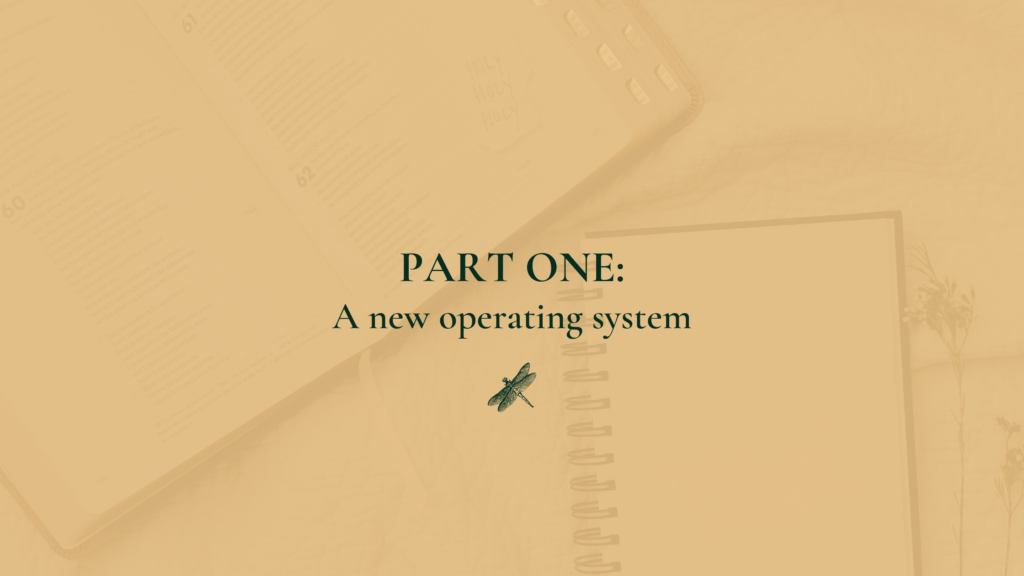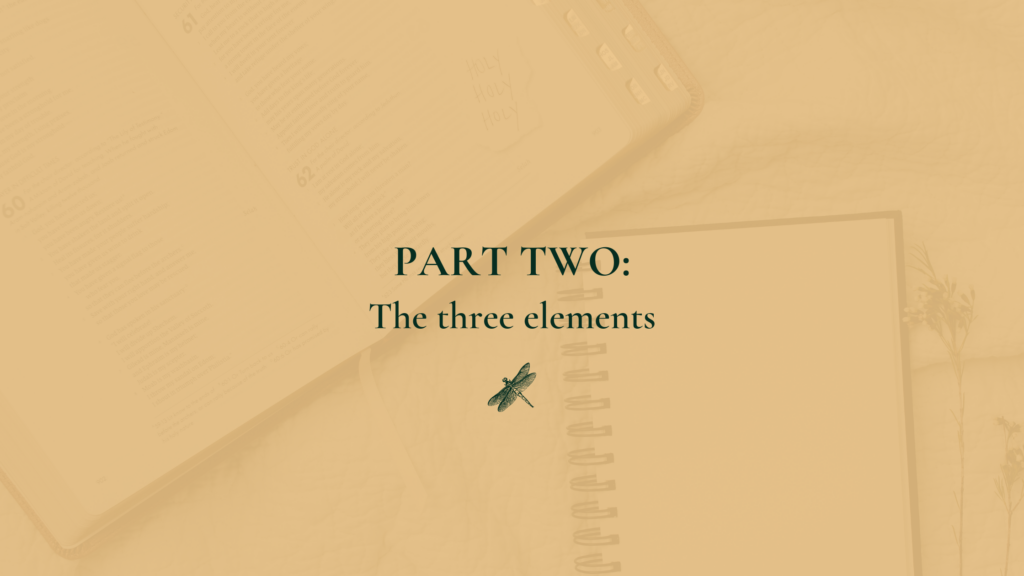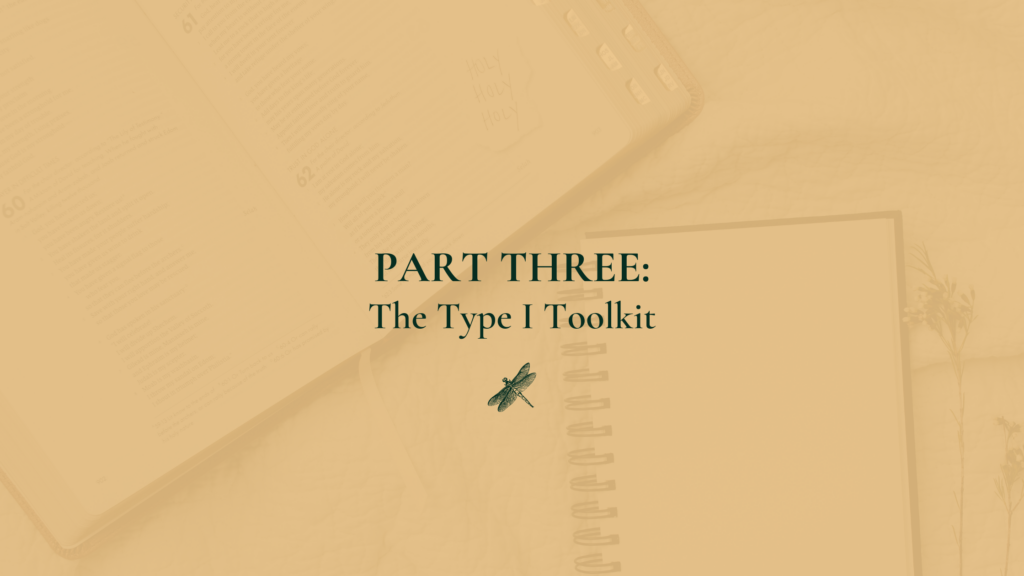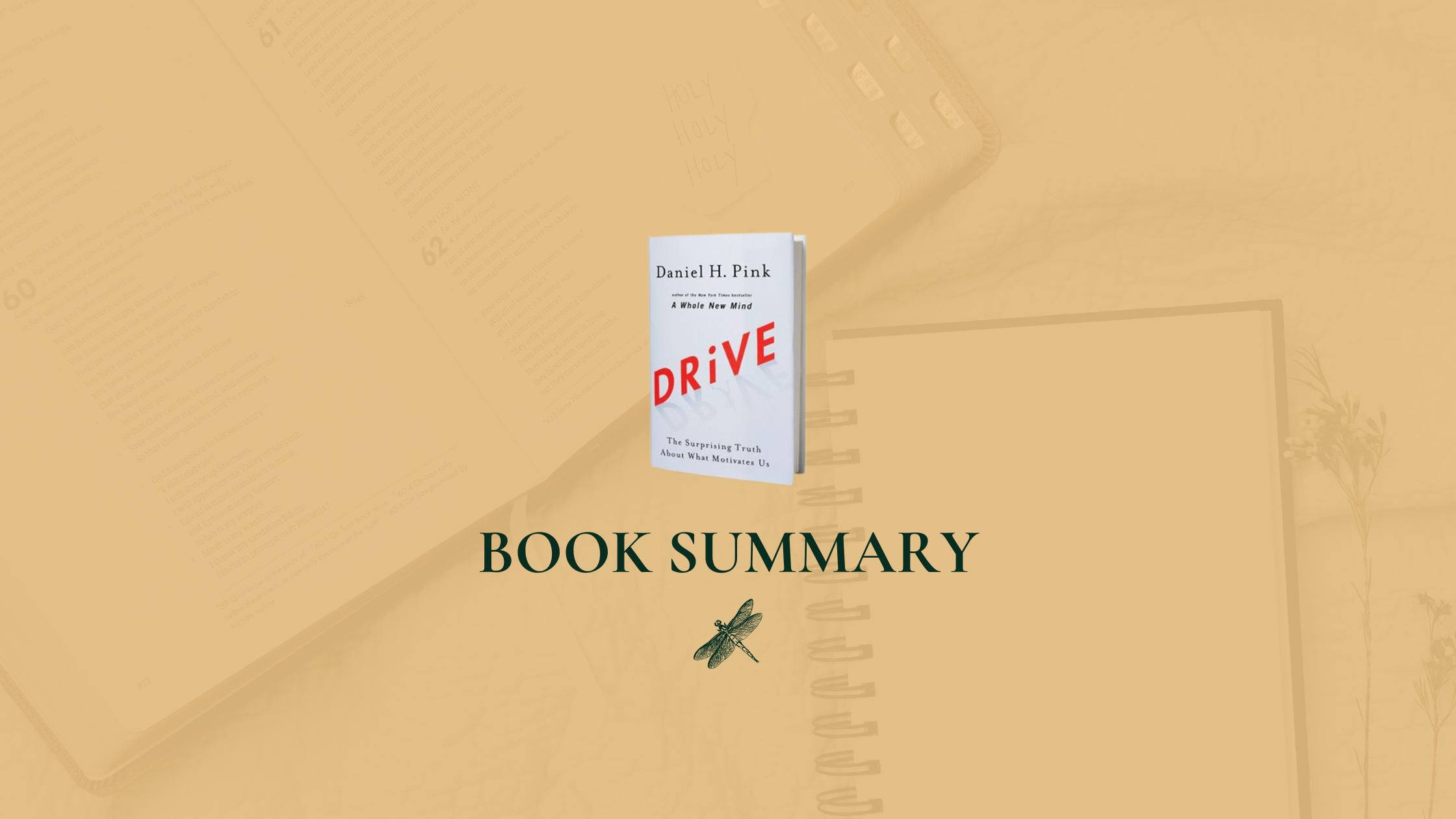Drive by Daniel H. Pink. Although I’ve known that the book exists since it was published – never actually read it.
Recently I started to notice that it was recommended in almost any book, podcast and video that I was learning from (quite a coincidence that one cannot ignore, right?), so I decided to finally read “Drive”.
The book was 100% worth reading, and I liked it so much that I decided to share the summary and main takeaways here.
In this blog, you’ll find:
- The summary of Drive by Daniel H. Pink in one sentence (my interpretation)
- Summary of each part of the book:
- Part one. A new operating system (Motivation 3.0 and Type I behavior)
- Part Two – The three elements (Autonomy, Mastery, Purpose)
- Part Three: The Type I Toolkit (what resources you can find there, in short)
Summary of Drive by Daniel H. Pink in one sentence:
For us to thrive nowadays, we need to cultivate our intrinsic motivation – autonomy, mastery and purpose – to succeed, instead of the external, “reward-punishment” motivation, because external motivation doesn’t help anymore.
This is purely my interpretation – if you’ve read the book and would define it otherwise, let me know in the comments, I’m curious to know!
More detailed summary of Drive by Daniel Pink:
Part one. A new operating system

In this part, Daniel Pink explains the evolution of human motivation and introduces his idea of Motivation 3.0.
Later, he describes people who embrace Motivation 3.0-like behaviour (Type I), and people who don’t (Type X).
Now, let’s talk about it in more detail.
Motivation 3.0
Motivation – it’s what drives us.
As we grow and evolve as a human species, our motivation evolves as well. At first, when our ancestors used to live in cages, their main motivation was – to survive. (mr. Pink calls it “Motivation 1.0”)
Then, when the standards of living raised during the 20th century, smart people decided that the main motivation of any human being is economical – “I’ll choose what’s the best for my self interest”.
It made managers turn to “carrots and sticks” motivation method (“Motivation 2.0”).
“Carrots and sticks” motivation means – the employee works whether to get an award or prize (carrot), or not to get punished (stick).
What Drive by Daniel Pink is about – the author calls it the next level of human motivation, or “Motivation 3.0”, that we need to be more aware of.
Why Motivation 3.0 is important:
- Motivation 2.0, or “carrots and sticks” work only if the tasks are algorithmical (routine- and rule-based). In that case, the employee is like a human machine that knows precisely what to do, how to do it, and the results only depend on whether all the boxes are checked, and how fast it is done.
- In the 21st century, routine-based work gets less and less important. Business world enters the unambiguous, fast-paced, always-changing era. More and more employees need to figure out solutions on their own daily, and solve problems the way it hasn’t been done before. They do so, by using their creativity and adapting quickly.
- Now, in that case,Motivation 2.0 doesn’t work. If you use ‘carrots and sticks’ motivation where creativity is crucial to do the job well, it may help to reach some short-term gains, but mostly leads to a long-term failure.
There are multiple examples from research and business case studies in ‘Drive’ that approve the idea. If you’re interested, know you will find it in the book – it wouldn’t be a summary if I described them all 🙂
A good example that sums the main idea up – why Motivation 2.0 doesn’t work:
Pay your children to take the trash out once, and they won’t take the trash out for free ever again.
The reward narrows the focus on the prize, not on the task. With focus on the prize, it takes longer to do the actual task (if the job requires us to solve problems creatively).
What’s even more, we’re not motivated to do the task without the prize anymore. Plus, if we got the prize once, we want a bigger prize the next time.
Not a great strategy for a long term, is it?
Type I and Type X
Chapter about Type I and Type X people expands on “who gets motivated and why”.
Even without knowing the term ‘Motivation 3.0’, there are people who express Type I or Type X behaviour:
- A person who expresses Type X behaviour is fueled by extrinsic motivation – competition and rewards, prizes, social status, money and all the other things that make one look cool on Instagram.
- A person who expresses Type I behaviour is motivated intrinsically. That is, the person is excited about becoming better, mastering a certain skill, and enjoy the activity itself.
Ironically, as Daniel Pink proved in the book with research, there is a greater chance to get the external awards, perform better and feel higher levels of well-being if we focus on the inner motivation.
Type I behaviour can be trained and cultivated.
Part Two – The three elements

In this part of the book, Daniel Pink expands on what Motivation 3.0 consists of, and how we can cultivate Type I behaviour (that is – work and life, fueled by intrinsic motivation).
He offers three elements to cultivate Motivation 3.0 and Type I behaviour – Autonomy, Mastery and Purpose.
Autonomy
In ‘Drive’, Daniel Pink cites two influential behavioural scientists – Edward L. Deci and Richard M. Ryan – to explain autonomy:
People who have autonomy, have control over the four T’s in their work:
- task (what they do),
- time (when they do it),
- technique (how they do it), and
- team (whom they do it with).
Because some managers gave their team autonomy, such great products like post-it notes, Gmail and Google translate were introduced to the world, and allowed Zappos’ (shoe company) customer service to have one of the best turnover rates in industry and higher customer satisfaction, topping Cadillac, BMW and Apple.
What’s important, though – working autonomous doesn’t mean working without accountability.
There are still goals present, and the team understands what needs to be accomplished.
They simply have freedom to decide how they do it.
Mastery
Mastery, as Drive by Daniel Pink describes it, is a long-term effort. It’s an urge to become the best you can be at a certain thing.
To explain mastery as a part of Motivation 3.0, a great deal of the chapter revolves around 3 concepts. These concepts are Flow, Goldilocks tasks, and asymptote:
- Flow – it is a concept created by Mihail Csikszentmihalyi. We are in the flow state when we do tasks that excite us, absorb us, make us forget about time or other things, and challenge our abilities.
- “Goldilocks tasks” are tasks that challenge us in a way that is not too hard, and not too easy as well. It’s the sweet spot that makes us believe we can do it, and want us to overcome the challenge. To keep ourselves, and our employees motivated, we need to find our “Goldilocks tasks” constantly, and add to our day-to-day activities.
- Asymptote – it is a graph in geometry with a curved line that is always moving closer to one of the axis, but never reaches it. The same way mastery is explained in “Drive” – we will never become perfect in our work, but it’s fascinating to move towards it, even though it sometimes is frustrating.
Therefore, mastery that motivates us in the long term:
- Is learning-focused – meaning, we make learning and improving our goal, not the achievements;
- Consists of deliberate practice – we have to keep in mind that we will need grit and constant effort, and that the road will not always be covered in roses and fun. At times it will be painful and exhausting, and that should be ok with us;
- Is an asymptote and we know it – we know that we’ll never achieve perfection, but it’s worth reaching towards it.
Purpose
We as human beings need purpose – the feeling that we’re serving something bigger than ourselves – to keep us going through hardship and stay motivated in the long term.
When you understand and face your mortality, questions like ”Did my work matter to the world? Will I leave my mark? What will it be?” get even more important.
As the Western world becomes older, we will pay more attention to it.
Some practical ways to add a sense of purpose to organisation culture:
- Using company profit to reach the higher purpose;
- Check if the employees use “they” or “we” when they talk about the organisation. If the latter, it’s a great sign they are not connected to the greater purpose (they feel parted from the company, not a part of it and its bigger goals), so some work has to be done to improve it;
- Let the employers decide how to pursue their purpose (autonomy).
So, that’s what Motivation 3.0 consists of – Autonomy to choose HOW to get things done, Mastery or, a long-term effort to reach closer to perfection, never quite reaching it, and Purpose, or being a part of something bigger than yourself.
Now, let’s see what’s in the part three of the book.
Part Three: The Type I Toolkit

This is the part of ‘Drive’ where Daniel Pink has collected useful and practical ways how to cultivate Type I behavior:
- As an individual, for yourself;
- As a manager, in your team, office or company;
- As a business owner – there are tips how to build motivating (Type I) compensation system;
- As a parent or educator – for kids.
He also has added:
- a list of 15 books he recommends reading, and
- 6 business thinkers that he’d recommend following and reading more of their work. For example, Douglas McGregor, Peter F. Drucket, and others.
He ends the book with practical tips on how to apply the principles of the book to getting and staying motivated to exercise.
Note: I can only agree that exercising is the best way to start apply the principles to life. It takes out the pressure and high stakes that would be at work, and focuses on building mindset and habits that you can later transfer to the business world.
So, that’s the summary of Drive by Daniel Pink. Was the summary useful? What is your takeaway? Tell me in the comments!
Want more?
Subscribe to the newsletter (down below) to know when a new, similar content comes out!
Until the next newsletter – say hi on social or contact me for business creativity boosting training programs!

Comments are closed